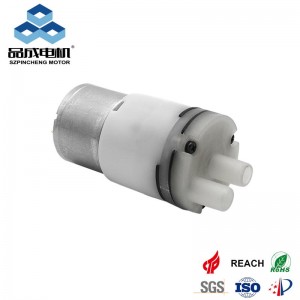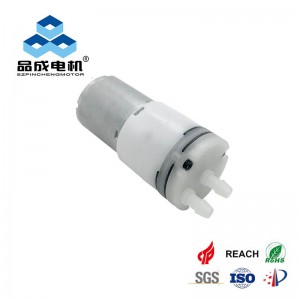Diaphragm pumps are the workhorses of many fluid transfer systems, prized for their versatility, reliability, and ability to handle a wide range of media, from clean water to aggressive chemicals. However, like any precision equipment, they require regular maintenance to ensure peak performance and longevity. Over time, residue, mineral deposits, or chemical buildup can clog the valves, restrict flow, and ultimately lead to pump failure. This article provides a comprehensive, easy-to-understand guide on how to properly clean a diaphragm pump, ensuring your equipment remains reliable and efficient.
The Critical Importance of Diaphragm Pump Maintenance
Regular cleaning is not just about restoring flow; it is a vital preventative measure. A contaminated pump can suffer from several issues:
• Reduced Flow and Pressure: Clogged inlet and outlet valves prevent the pump from achieving its rated flow and pressure, leading to system inefficiency.
• Premature Wear: Deposits can cause friction on the diaphragm and valves, accelerating wear and tear on the internal components.
• Contamination Risk: In applications like food processing or medical sampling, residue from previous cycles can contaminate the current media, posing a serious risk. By implementing a simple cleaning routine, you can significantly extend the life of your pump and maintain the integrity of your fluid system.
Chapter 1: Safety and Preparation
Before beginning any cleaning procedure, safety must be the top priority.
Disconnect Power
Always disconnect the pump from its power source. For a 12v miniature water pump, this means disconnecting the battery or power supply leads.
Depressurize the System
If the pump is part of a pressurized system, ensure all pressure is safely relieved before disconnecting any lines.
Identify Media
Determine what fluid the pump was last used with. This will dictate the appropriate cleaning agent and necessary personal protective equipment (PPE), such as gloves and eye protection.
Chapter 2: Simple Flushing (Routine Cleaning)
For pumps that handle relatively clean fluids (like water or mild solutions), a simple flush is often sufficient.
Prepare Cleaning Solution
Use a cleaning agent compatible with the pump's materials and the residue you are removing. For mineral deposits, a mild vinegar or citric acid solution works well. For general residue, clean water or a mild detergent is often adequate.
Run the Pump
Place the inlet line into the cleaning solution and the outlet line into a waste container. Run the pump for several minutes to circulate the solution through the pump head and valves.
Rinse Thoroughly
Once the cleaning solution has circulated, switch to clean, fresh water and run the pump again for an equal amount of time. This step is crucial to remove all traces of the cleaning agent, which could otherwise damage the pump or contaminate the next batch of media.
Dry Run
After rinsing, run the pump dry for a few seconds to expel any remaining liquid from the pump head.
Chapter 3: Deep Cleaning (Disassembly and Inspection)
If simple flushing does not restore performance, a deeper clean involving partial disassembly may be necessary.
Access the Pump Head
Carefully remove the screws or clamps securing the pump head to the motor housing. Note the position of all components, especially the diaphragm and valves, as they must be reassembled in the correct orientation.
Inspect Valves
The check valves (often small rubber or plastic components) are the most common point of clogging. Gently remove them and inspect for any trapped debris or mineral buildup.
Clean Components
Soak the pump head components (excluding the motor housing) in the appropriate cleaning solution. Use a soft brush (like a toothbrush) to gently scrub away any stubborn deposits from the valve seats and the inside of the pump head. Do not use sharp tools that could scratch the sealing surfaces.
Inspect Diaphragm
Examine the diaphragm for any signs of cracking, tearing, or hardening. If the diaphragm is damaged, it must be replaced to prevent leaks and maintain performance.
Chapter 4: Reassembly and Testing
Reassembly requires precision to ensure proper sealing and function.
Reassemble Valves
Carefully place the check valves back into their correct positions. Ensure they are seated flush and facing the correct direction (they are directional).
Secure Pump Head
Place the diaphragm and pump head back onto the motor housing, ensuring the diaphragm is properly aligned. Tighten the screws evenly and gradually in a cross-pattern to ensure uniform pressure and a proper seal. Over-tightening can damage the plastic housing.
Test Run
Connect the pump to its power source and run it with clean water. Check for leaks at the pump head and connections. If the pump runs smoothly and achieves the expected flow and pressure, the cleaning is complete.
Conclusion: The Pincheng Advantage in Longevity
Proper maintenance is the key to maximizing the lifespan of any fluid handling device. By understanding how to clean a diaphragm pump, you ensure that your equipment delivers consistent, reliable performance. At Pincheng Motor, we design our pumps with maintenance in mind, using high-quality, chemically resistant materials that simplify the cleaning process and extend the life of the unit. Whether you are using a water pump micro for a delicate application or a 12v miniature water pump for a portable system, choosing a quality manufacturer means choosing a product built for durability and easy upkeep. Trust in Pincheng Motor for the reliable diphragm pump solutions that keep your systems running smoothly.
you like also all
Read More News
Post time: Nov-25-2025




